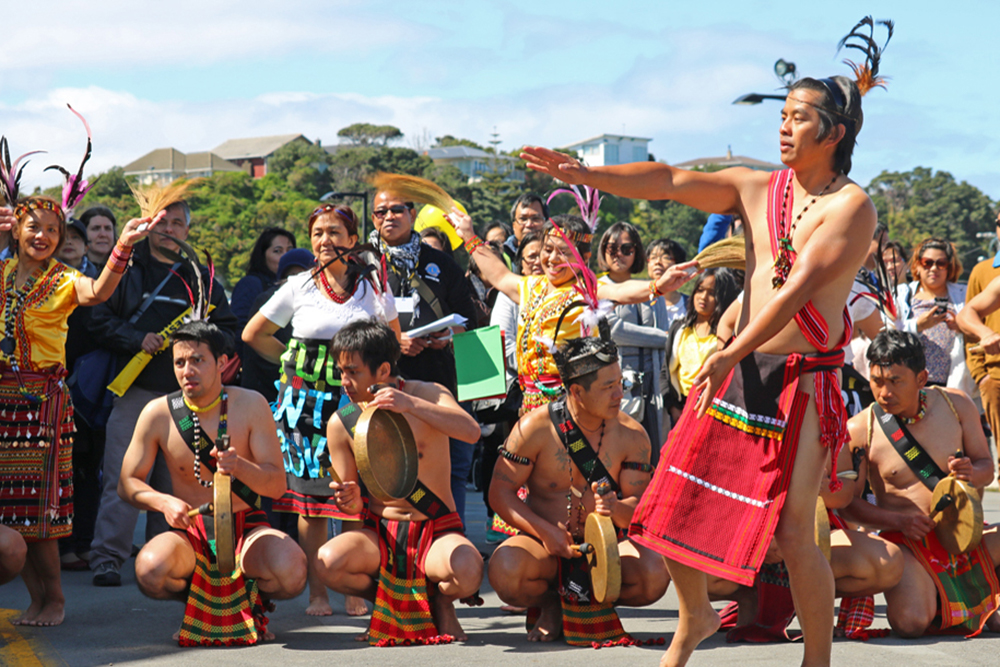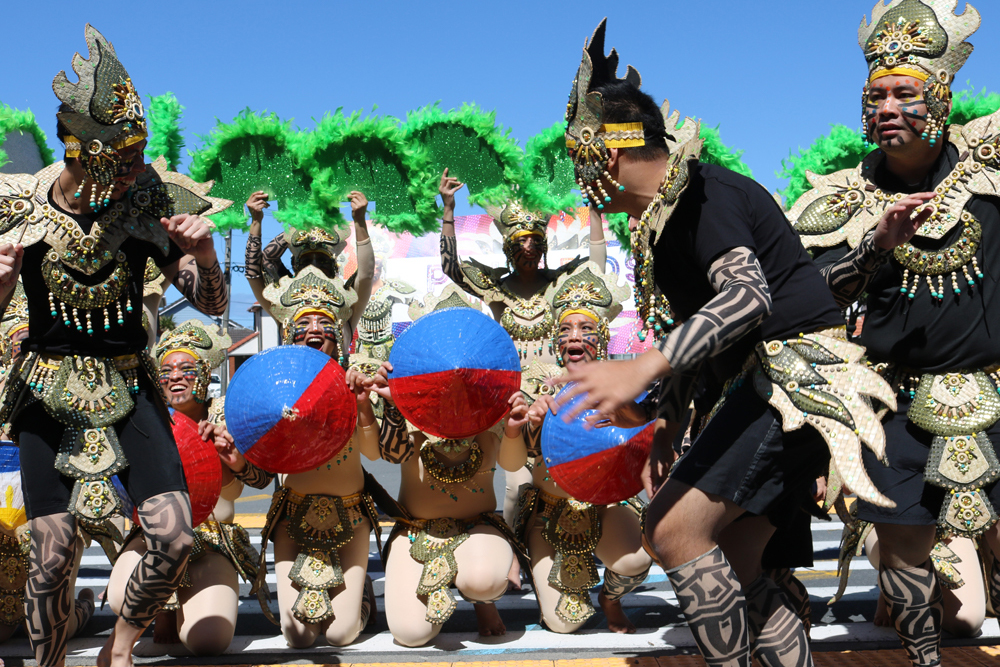This year, these festivals and many others were collectively performed far away in New Zealand.
These performances, together with sporting and cultural events, beauty pageant, and street food, were part of a weekend of celebration for the community: Pistang Pilipino 2016.
The colourful costumes, music and dancing that accompany these festivities were brought to Wellington last week by eight Filipino community groups from all over New Zealand.
They offered a clear and entertaining demonstration of the vibrancy of the Filipino communities in New Zealand.
The Parade of Festivals featured dozens of performers drawn from all over New Zealand to compete for the top prize.
In the end, two groups won in a tie: The Organisation of Cordilleras in New Zealand for their performance of the Grand Cordillera Festival and the Christchurch Philippine Culture and Sports group for the Pintados Festival.
The Grand Cordillera Festival takes place each November in Baguio City in Northern Luzon. The area is home to the Igorot, or Cordilleran, people, a collective term to describe multiple ethnic groups.
In the weeklong festival, Grand Cordillera is a celebration of the culture and traditions of those groups.
The Organisation of Cordilleras in NZ travelled from the Auckland region, which has by far the largest community of Filipinos in New Zealand with 51 percent of New Zealand's total Filipino population (over 20,000 people) living there. Filipinos make up Auckland’s fourth largest Asian migrant group.

The Organisation of Cordilleras in New Zealand jointly won first place for their recreation of the Grand Cordillera Festival
The festival underscored that the Filipino community is as diverse as New Zealand itself.
The performers at Pistang Pilipino hailed from Christchurch, the third largest Filipino community in New Zealand (4,887 Filipinos live in the Canterbury region). Many Filipinos migrated to Christchurch to provide critical labour needed to rebuild the city following the 2010 and 2011 earthquakes.
Pintados means “painted” in Spanish and was introduced into the Philippines during early Spanish colonization. The word refers to the tattoos then worn by Cebuano Visayan warriors.
Today, the festival held in Tacloban City, Leyte each June to celebrate the pre-colonial traditions of the area and also to honour Señor Santo Niño, or the holy child. Participants dress in traditional clothing, intended to showcase intricately designed tattoos.

Christchurch Philippine Culture and Sports group recreate the Pintados Festival
Basketball, the most popular sport in the Philippines, was also a major competition event.
The Philippine Pavilion showcased photographs and paintings, snacks, clothing, historical flags, crafts, and a video tracing Filipino migration to New Zealand from 1936 to the present.
The Parade of Festivals also featured historical re-enactments, such as those of the colonial era, pro-reform Propaganda Movement, anti-Spanish Katipunan and anti-Marcos protestors.
And, of course, venders were busily serving favourite Filipino foods like sisig(chopped pork), adobo (marinated chicken or pork), siopao (steamed pork buns), barbecued pork, and leche flan (caramel custard). Masterchef Leo Hernandez was on hand to sample the offerings.
The communities also paid respect to their new home here in New Zealand with Saturday's events opening with a powhiri, in which the waiata Māku e mihi atu was met with Filipino songs, such as Ako ay Pilipino.
It was a testimony not only to the growth of the Filipino community in New Zealand but also the deepening of roots here. They work in vital parts of the New Zealand economy, including health, care, construction, agriculture, and IT.
With New Zealand’s aging population and shortages in construction workers following the Christchurch earthquakes, Filipinos have met important needs.
Many young Filipinos come to New Zealand to study. Filipinos are also the largest nationality from ASEAN with residency in New Zealand, with around 40,500 Filipino residents in New Zealand in 2013.
Pistang Pilipino demonstrated that Filipino migrants bring more than just their labor and trade. Even as they integrate into local New Zealand communities, Filipinos are also establishing new communities by bringing in their own culture and history. They are reinterpreting New Zealand’s multicultural environment through their own perspectives.
By Rebecca Townsend
Rebecca Townsend is currently working on a research report, Celebrating together: Filipinos in New Zealand, that the Asia New Zealand Foundation will publish early next year.


